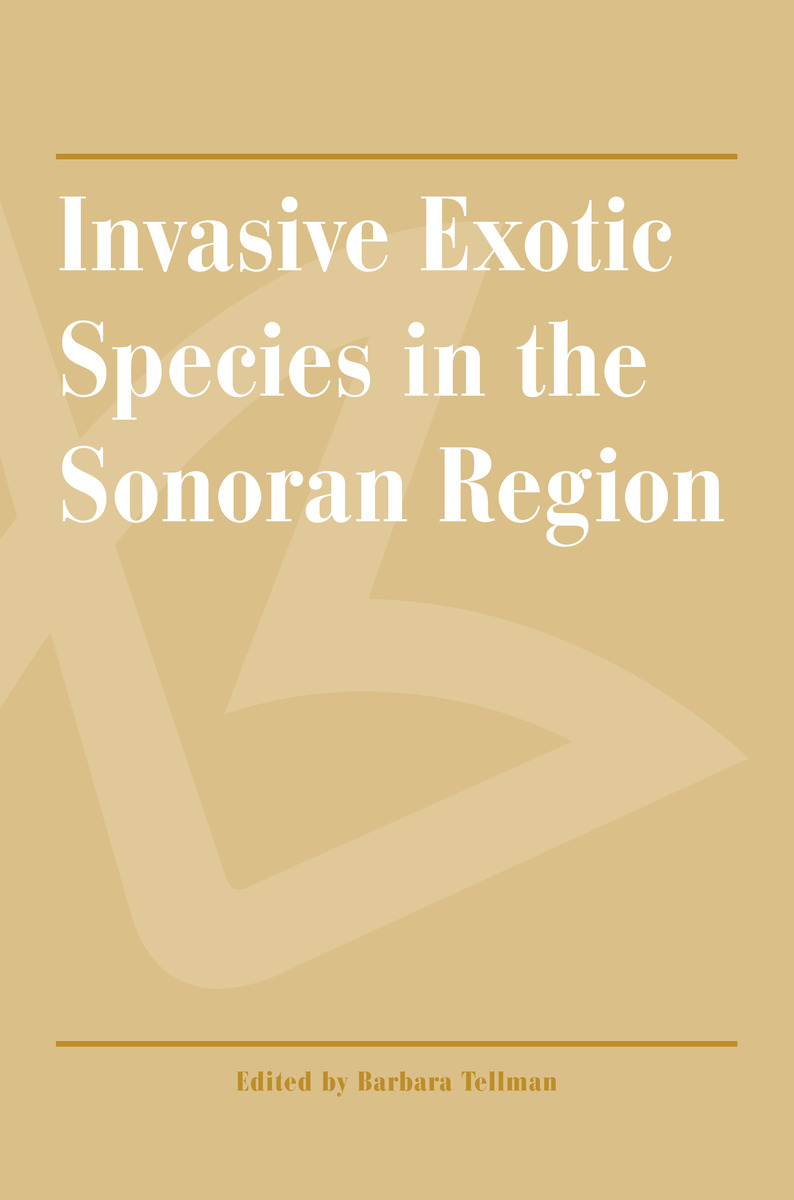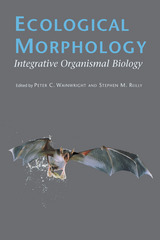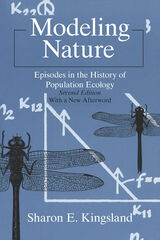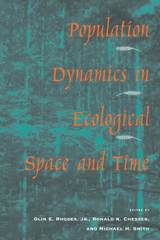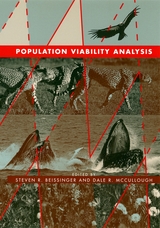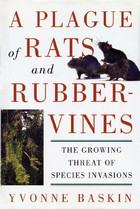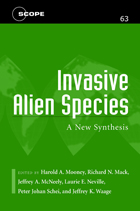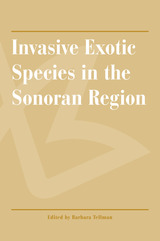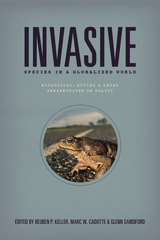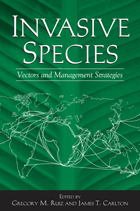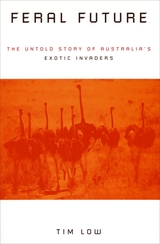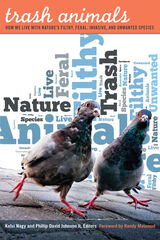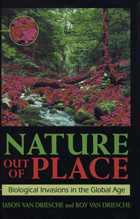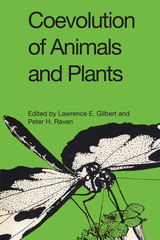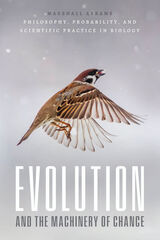Invasive Exotic Species in the Sonoran Region
University of Arizona Press, 2002
eISBN: 978-0-8165-5386-0 | Cloth: 978-0-8165-2178-4
Library of Congress Classification QH353.I584 2002
Dewey Decimal Classification 577.18
eISBN: 978-0-8165-5386-0 | Cloth: 978-0-8165-2178-4
Library of Congress Classification QH353.I584 2002
Dewey Decimal Classification 577.18
ABOUT THIS BOOK | REVIEWS | TOC
ABOUT THIS BOOK
All over the planet, organisms of many species are appearing outside of their natural habitats—often carried by that particularly peripatetic species Homo sapiens. This book marks the first comprehensive attempt to address problems posed by expanding populations of exotic plant and animal species in the Sonoran Desert and adjacent grasslands and riparian areas. It describes the arrival and spread of non-native species as diverse as rats and saltcedar, covering both their impacts and the management of those impacts. It is estimated that as much as 60 percent of the vegetative cover of the Sonoita Creek-Patagonia Reserve, the first Nature Conservancy area designated in Arizona, is dominated by exotic plants, and that introduced fish pose a recurrent threat to the native fish of that area. Meanwhile at the Grand Canyon, invasives such as tamarisk, red brome, carp, and catfish are pervasive either in the Colorado River or in the patches of desert scrub along its shores. Throughout the Sonoran Desert and adjacent areas, from islands in the Sea of Cortés to desert grasslands, some six hundred species of non-native plants and animals have become established, with bullfrogs and Mediterranean grasses now common where they once never existed. The book brings together contributors from academia, government, and nonprofit organizations, including such experts as Gary Paul Nabhan, Richard Mack, and Alberto Búrquez-Montijo. They review historic and even prehistoric origins of non-native species—not only exotic plants, amphibians, and mammals but also insects, fish, and birds. They then examine significant problems in each major subregion and ecosystem and discuss control efforts. The volume contains the first compiled list of more than 500 naturalized exotic species in the Sonoran region. Invasive species issues are rapidly emerging as major environmental concerns both locally and worldwide. This book will assist professionals—ecologists, conservation biologists, and policy makers—involved in invasive species control in the Southwest and will be a rich resource for all concerned with protecting native species and their habitats.
See other books on: Biological invasions | Congresses | Ecology | Nonindigenous pests | Tellman, Barbara
See other titles from University of Arizona Press
